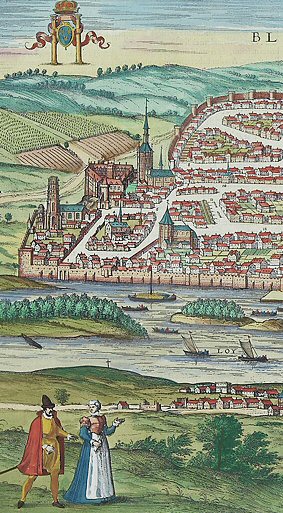17 November 2006
RealityCity
By Rusty Rockets
 What will the cities of the future look like? Urban planners and engineers trying to create the perfect urban utopia have to consider a multitude of factors, ranging from disparate cultural factors and changing technologies to disappearing fossil fuels; making the task difficult at best. But new gaming inspired software can let urban planners play god and steal a sneak peek into the success or failure of future cities before they are built. SimCity, make way for RealityCity.
What will the cities of the future look like? Urban planners and engineers trying to create the perfect urban utopia have to consider a multitude of factors, ranging from disparate cultural factors and changing technologies to disappearing fossil fuels; making the task difficult at best. But new gaming inspired software can let urban planners play god and steal a sneak peek into the success or failure of future cities before they are built. SimCity, make way for RealityCity.
The granddaddy of all simulations, SimCity, released in 1989, spurred a number of software developers to design similar packages for real world applications. One of the first pieces of software developed was Envision's MetroQuest. Urban planners, industrial scientists, and social policy makers have jumped at the chance to use this kind of gaming inspired software with computer-aided design technology. The Australian Commonwealth Scientific and Industrial Research Organization's (CSIRO) Stephen Eagan explains that: "Plans can be studied interactively by planners, builders, suppliers, residents, even traffic authorities or environmentalists. Collaboratively, they can use the latest software to optimize the quality and functionality of the development, or the sustainability and its lifecycle performance."
But such computer noodlings are positively simplistic when compared to a new supercomputer application that will take simulations to a whole new level. This week, University of Leeds researchers are showcasing a "Sim" software model at Florida's Super Computing 2006 conference. Their city planning model integrates data recorded from the UK's 2001 census, which can be used to create a model of the entire UK population. "We're building a core model which represents the whole of the UK at the level of (synthetic) individuals and households with many attributes and behaviors," explains the University of Leeds' Dr Mark Birkin.
What Birkin and his team have achieved is something like a melding of The Sims and SimCity - using real-world data. The real power of the Leeds team's software is that it can pull together otherwise disparate publicly and privately stored data - things like car ownership, health records, real estate prices, transport, recreation facilities and education - into the simulation.
In short, it means that planners can design a virtual city, load it up with real - but anonymous - citizens modeled on census and other electronically available data, and let the program run for a simulated 10, 20 or 50 years into the future. By the end of this virtual period, social policy makers should be able to see how the population will likely disperse itself, and how efficiently things such as public amenities will run. Well, that's the theory, anyway. "We can profile populations area by area and forecast attributes such as health status, employment, and car ownership ten or twenty years ahead. In future, we'll be able to project the effects of policy change and help policymakers evaluate the impact of the decisions they take," explained Dr Birkin.
The Leeds' team call their new simulation methodology "E-social science", which they say is the next logical step in population profiling, where social scientists, and increasingly (and perhaps worryingly) private organizations, can look at trends within a population, analyze them and then pass relevant information on to policy makers.
But as with all technological leaps forward, there is a potential dark side. Theoretically, E-social science will allow planners to prevent urban design clangers like ghettos, slums and city dead spots from ever occurring. But where does urban planning end and social engineering begin? Controlling the behavior of the populace has always been an attractive proposition for despots and politicians. Paris in the 1850s was ripe with revolution and riot, so Napoleon III hired architect Baron Georges-Eug�ne Haussmann to "modernize" the city. This involved creating shopper friendly streets, but most importantly his task was to create streets too broad for barricades to be built by a revolting populace.
But Napoleon's planning efforts look Neolithic compared to what would be possible using E-social science. Policy makers (and likely, corporations) could refine what kind of urban landscape would make people spend more at a particular location, or what environs would be more conducive to couples having more, or less, children. Complete profiles of populations could also predict where, when and by whom crimes may be committed. A cynic might ponder the hidden and powerful forces that E-social science will unleash on our lives in the future.
